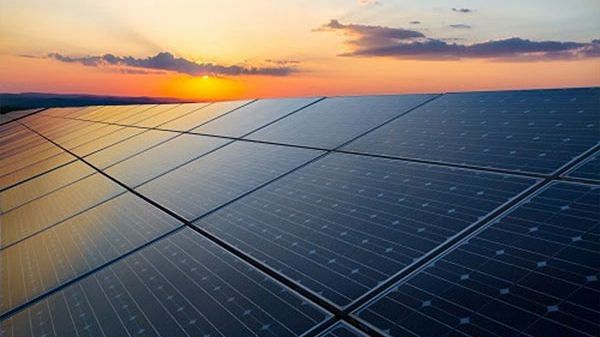Decarbonisation and transitioning to net zero is one of the key challenges facing India. The country has correctly taken the position that there cannot be a one-size-fits all solution to the energy transition. Within India too, the transition strategy for each state will be based on its priorities and its wherewithal. In his speech a few days ago, PM Modi alluded to the debt crisis in countries being of great concern for the world. While one can argue whether the debt of the states of India has reached “crisis levels”, there is little doubt that it is rather high, and continues to increase. The state budgets are not going to be able to meet the demands of decarbonisation. In fact, the states will have to be a recipient of capital to reform their power sectors, and push the agenda of decarbonisation. We should consider ways of enhancing the ability of state governments to access other sources of domestic and global capital for their energy transitions. This will allow for a many-solutions approach within India.
Also read: Stable economy, unstable deals—How Modi govt’s well-intended sudden bans hurt India globally
Transitioning to lower carbon
If India has to move closer toward its net zero commitments, then it has to find ways to consume less and less coal. There is tremendous progress in the renewables space in India. According to the All India Electricity Statistics 2023 report by the Central Electricity Authority, as of FY22, solar accounted for 10 per cent of electricity generation. Even today, almost 74 per cent of electricity consumed in India comes from coal plants, and needs to be slowly phased out. While the renewables sector in India has made remarkable progress in the last decade, there is still a long way to go before the share of thermal energy can be brought down.
Shifting to renewables has two challenges.
First is the investment required in creating the infrastructure that can handle solar, off-shore wind, and other forms of renewable sources. For example, as more renewables hit the grid, greater investments will be required for the grid to handle this power. Deliberations at the Global Just Transition Dialogue in March this year suggested that at least $900 billion will be required for just energy transition in India over the next 30 years, only for coal mines and thermal power plants.
Second is the extent of fiscal transfers required to deal with those that are affected by this change. Take the example of the two states that rely on coal — Chhattisgarh and Jharkhand. In both these states, 97 per cent of the electricity generated is from thermal power plants. Not only is the electricity consumed from coal-based plants, but a large part of the economy is based on coal mining and related activities. For example, almost one-fourth of the total coal mines in India are in Jharkhand, with the coal mining industry supporting 3,00,000 jobs. As coal mines get decommissioned, and electricity consumption shifts to renewables, there will be significant implications on the economy of these two states. Unless the political economy problems are resolved, states will not be able to take the required steps to move away from coal. Each state has its own set of challenges as it embarks on the path to net zero.
Also read: The idea of a new Constitution is extremely dangerous. India doesn’t want dictatorship
Fiscal health of the states
Difficult transitions are often financed through state budgets. Electricity is a state subject, discoms in several states are still owned and operated by the state. The path towards decarbonisation has to pass through the reform of the power sector. This includes dealing with subsidies on electricity tariffs, especially for domestic and agri consumers, and the political economy considerations that come with this. The focal point of action, therefore, are the states. Tamil Nadu for example has proposed to increase the contribution of green energy from the current 21 per cent to 50 per cent by 2030. The trajectory of each state will be different.
The current fiscal position, however, leaves little room for the states to invest in either their discoms or the improvement of infrastructure, or provide support to those on the losing side. The debt to Gross State Domestic Product (GSDP) ratios of states such as Andhra Pradesh, Telangana, Kerala and Tamil Nadu range between 20-30 per cent of their respective GSDPs. When one adds the off-budget borrowings, these increase to as high as 44 per cent of GSDP. In Tamil Nadu, 96 per cent of the off-balance sheet borrowing is by the Tamil Nadu Generation and Distribution Corporation Limited (TANGEDCO). In Andhra Pradesh and Telangana, the state power finance corporations account for 12-18 per cent of the off-budget borrowings. It is likely that the power finance corporations further lend money to the discoms. If one looks at revenue expenditure, in several states, the growth in interest payments is higher than the growth in developmental expenditure.
The path to net zero requires the debt overhang, especially of the discoms, to be addressed and for states to devise their own strategy for the transition. The choice of technology, as well as the strategy for dealing with socio-economic consequences needs to come from the states. Reliance on multilateral agencies is not going to be enough. We must look for models for state governments to access pools of capital, both in India and overseas. Today, the states are constrained from accessing global capital directly. We should consider ways in which these avenues can be opened-up.
Renuka Sane is research director at TrustBridge, which works on improving the rule of law for better economic outcomes for India. She tweets @resanering. Views are personal.
(Edited by Anurag Chaubey)






